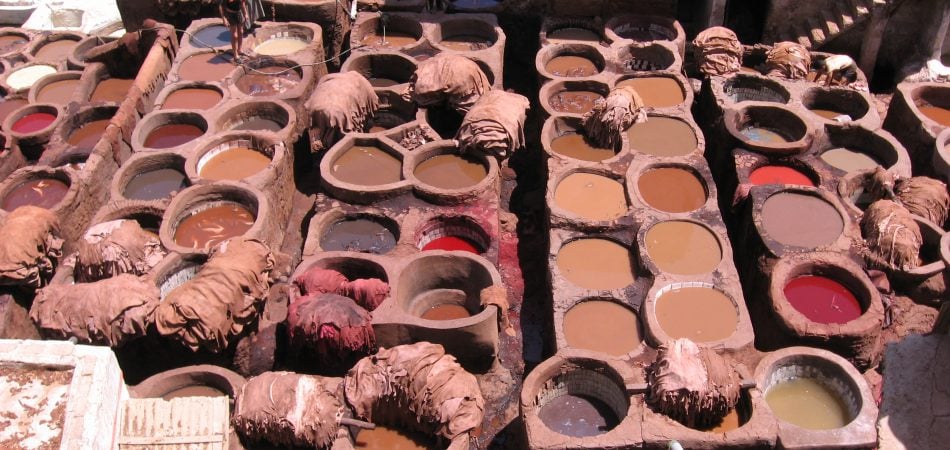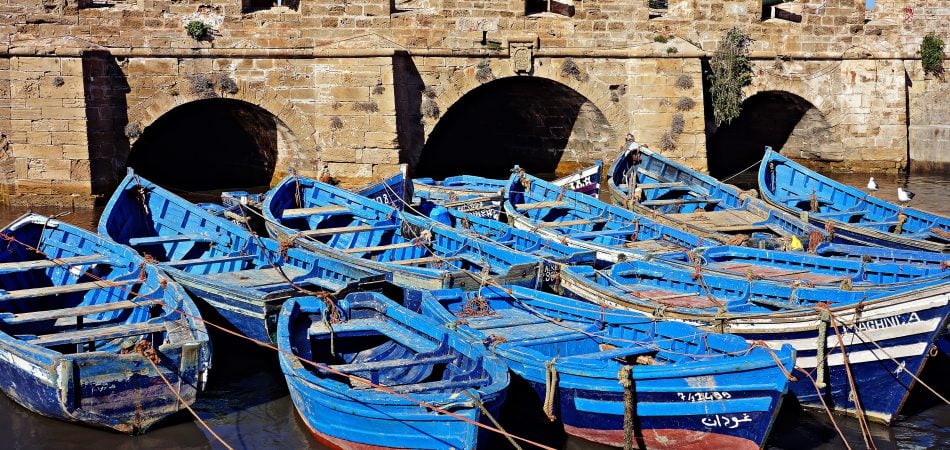
Surface water quality
Deteriorating water quality is one of the major problems facing Morocco’s water sector. Indeed, critical levels of pollution have been observed in several sections of watercourses, and several water streams have high concentrations of phosphorus, ammonia, organic matter and high coliform counts. The Sebou basin, which constitutes 30% of water resources, is heavily polluted by untreated industrial and municipal discharge and agricultural run-off. Nitrates and phosphorus are present as are pesticide residues. The two main rivers, Sebou and Oum er-Rbia, experience critical situations several times a year.[1] The main sources of water pollution can be summarized as follows:
Domestic pollution: On average, 600 MCM of domestic wastewater, containing nearly 360,000 tons of organic materials, discharges into the environment untreated. According to forecasts, wastewater discharges from urban areas will reach 900 MCM by 2020 and up to 1,050 MCM in 2030. Organic matter is high in urban wastewater, and the concentration decreases with the population increase due to dilution effects.
Industrial pollution: Industrial wastewater conveys approximately 140,000 tons of oxidizable materials annually, almost 40% of which is released into the environment. Most industrial activities (agro-food, leather, paper mills, textiles and others) are located on the Atlantic coast in Kenitra-Safi and in the cities of Fez, Tangier, Agadir, Marrakech and Meknes.
Agricultural pollution: This pollution results mainly from the use of fertilizers. On average, 720,000 tons of fertilizer and 8,500 tons of pesticides are applied annually to cultivated areas.
Accidental pollution: More than 30 spills have occurred since 1985. The increase in road traffic and transport of dangerous substances (hydrocarbons, chemicals etc.) expose drinking water intakes and dam reservoirs near highways to the risk of pollution.[2]
Groundwater quality
Groundwater resources, especially those close to the Atlantic, also experience a high level of pollution, namely:
- A high level of nitrogen in certain reservoirs, in particular in Beni Moussa and Mnasra where the level exceeds the maximum tolerated threshold of 50 mg/l; and where the pressure from agriculture and irrigation is intense.
- Salinity also exceeds the threshold allowed in the coastal reservoirs because of overexploitation.[3]
Water Use in Morocco

Current water use per sector
The total amount of renewable freshwater is 2.5 BCM/yr. Water demand exceeds water availability. Agriculture contributes 13% to the country’s GDP and is the largest water user (86% of total water withdrawals)[4] but has an efficiency rate of only 48%, indicating significant water losses. Domestic use accounts for 8% and industrial use for 6%. The drinking water system also experiences losses, with a performance rate of less than 70%, meaning losses close to a third. Groundwater contributes 32% of drinking water and about 31% to agricultural needs.
Agricultural water use and irrigation development
Of the total land area of about 71,085 million ha, less than 40 million ha are agricultural land, pastoral land for livestock and forest cover. Cultivated agricultural land represents only 12% of the country’s total land area, of which only 13% is irrigated. Agriculture employs about 80% of the rural population.[5] Drip irrigation has been adopted in the 2009 National Water Strategy with the aim of saving 2 BCM/yr of water by 2030.[6]
[1] Government of Morocco, 2009. National Water Strategy.
[2] Ibid.
[3] Ibid.
[4] Netherlands Enterprise Agency, 2018. Business Opportunities Report for Reuse of Wastewater in Morocco.
[5] Houzir M, Mokass M and Schalatek L, 2016. Climate Governance and the Role of Climate Finance in Morocco.
[6] Government of Morocco, 2009. National Water Strategy.
